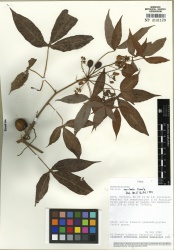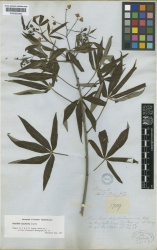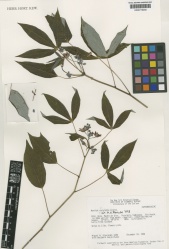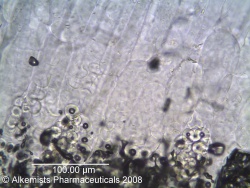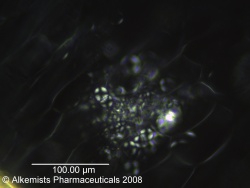Manihot esculenta (root)
(add USD 1918 information (macroscopic/microscopic)) |
(add Kew voucher specimen reference) |
||
| Line 14: | Line 14: | ||
=Botanical Voucher Specimen= | =Botanical Voucher Specimen= | ||
| − | {{ | + | {{Media3 |cat=Voucher |
| source=MOBOT, Tropicos.org | | source=MOBOT, Tropicos.org | ||
| Line 21: | Line 21: | ||
| companyURL=http://www.tropicos.org/Image/100000722 | | companyURL=http://www.tropicos.org/Image/100000722 | ||
| reference=Tropicos.org. Missouri Botanical Garden. 26 Mar 2014 <http://www.tropicos.org/Image/100000722> | | reference=Tropicos.org. Missouri Botanical Garden. 26 Mar 2014 <http://www.tropicos.org/Image/100000722> | ||
| + | |||
| + | | companyimage2=Kewlogo.gif | ||
| + | | companyURL2=http://specimens.kew.org/herbarium/K000600386 | ||
| + | | image2=Manihot esculenta Kew barcode=K000600386 225709.jpg | ||
| + | | source2=Royal Botanic Gardens, Kew. | ||
| + | |||
| + | | companyimage3=Kewlogo.gif | ||
| + | | companyURL3=http://specimens.kew.org/herbarium/K000716450 | ||
| + | | image3=Manihot esculenta Kew barcode=K000716450 553207.jpg | ||
| + | | source3=Royal Botanic Gardens, Kew. | ||
| }} | | }} | ||
Latest revision as of 15:02, 26 May 2015
Contents |
Nomenclature
Manihot esculenta Crantz Euphorbiaceae
Syn. Janipha manihot (L.) Kunth; Jatropha manihot L.
Standardized common name (English): cassava
Botanical Voucher Specimen
 |
 |
|
|
|
|
|
Organoleptic Characteristics
Macroscopic Characteristics
|
Microscopic Characteristics
|
High Performance Thin Layer Chromatographic Identification
Supplementary Information
Sources
- ↑ MOBOT, Tropicos.org http://www.tropicos.org/Image/100000722
- ↑ Royal Botanic Gardens, Kew. http://specimens.kew.org/herbarium/K000600386
- ↑ Royal Botanic Gardens, Kew. http://specimens.kew.org/herbarium/K000716450
- ↑ United States Dispensatory (1918)
- ↑ United States Dispensatory (1918)
- ↑ Elan M. Sudberg, Alkemist Laboratories http://www.alkemist.com
- ↑ Elan M. Sudberg, Alkemist Laboratories http://www.alkemist.com
